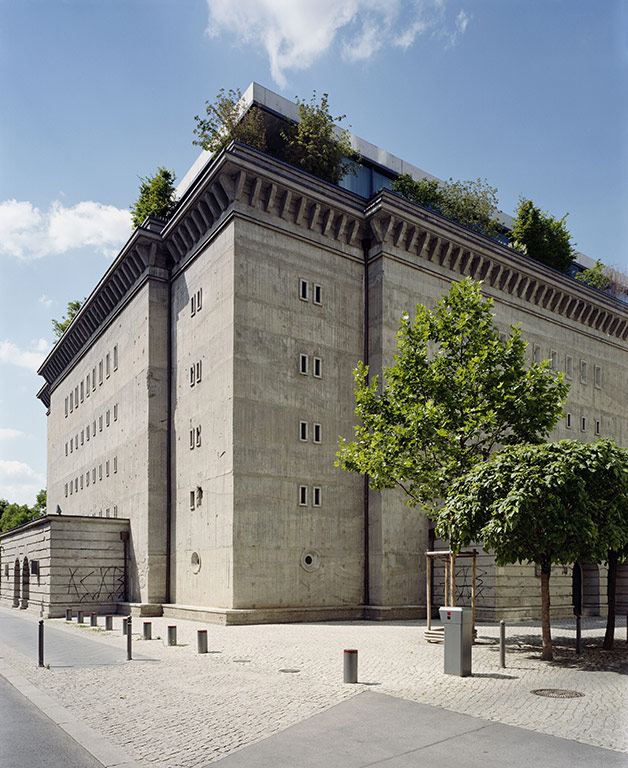- Monument/Memorial
- Reinhardtstraße 20, Berlin, Allemagne
- https://www.sammlung-boros.de/boros-collection.html?L=1
- info@sammlung-boros.de
The Friedrichstraße Railway Bunker was built to protect railway passengers. The bunker had room for 1.500 people. After the war the Soviet forces used it as a prison. At present it is devoted to contemporary art. The bunker can be visited by guided tours only.
The above-ground Friedrichstraße Railway Bunker is located at the corner of Albrechtstraße and Reinhardtstraße in the centre of Berlin. It was built in 1942 with the designation Friedrichstraße Railway Bunker. The planning began in 1941 under the direction of Albert Speer, in the context of the ‘Führer’s Immediate Action Program’ for the construction of civilian air raid shelters.
The first phase of air raids on Berlin took place in August 1940 and lasted until the fall of 1941. In 1944, the Allies started regular air raids on Berlin, with almost daily bombardments in February and March 1945.
The bunker was primarily designed to protect railway passengers at the nearby Friedrichstraße Station, as well as civilians from the surrounding residential areas. Visitors to the Deutsches Theater, too, could seek safety there when the air raid siren sounded. The bunker had room for up to 1.500 people. After the surrender in May 1945, the Soviet forces took over the facility and used it as a prison.
Starting in the mid-1950s, the bunker was used by the Berlin People’s Fruit and Vegetable Combine as a warehouse. After the fall of the East German regime in 1989/90, it experienced a number of short-term uses, including as a partying site for the techno scene, until Christian Boros bought the bunker in 2003 and had it reconstructed as an exhibit space for his collection of contemporary art. Due to its special historical significance, the building is under monument protection. The bunker can be viewed in guided tours only.

